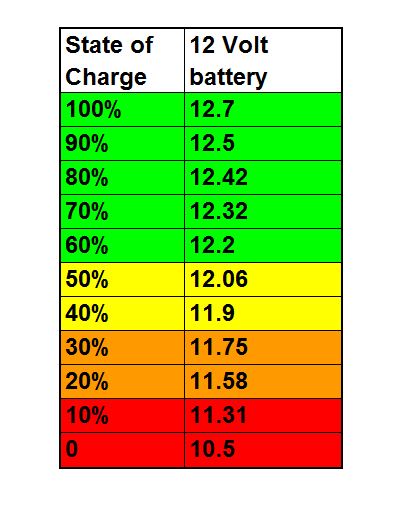Solar Top Off Estimates
55 posts
• Page 1 of 4 • 1, 2, 3, 4
Solar Top Off Estimates
First off - I understand that if you calculate devices carefully, you can more than guesstimate and also that the position of solar panels, relative to the sun make a difference, obviously. I'm just trying to get a ballpark sense of what a reasonable purchase (for me) will be. I tend toward "more is better" in most things and there is not a huge difference between the cost of a 100W system and a 160W. 200W seems like the point where prices start to increase.
Anyway, here's my question - lets's say my battery gauge is telling me I am down to something like 12.2 remaining, so I'm starting to think about recharging. Then, let's say I'm out in the open, not in the shade and it's nice and sunny out. I will not have the panels installed on my roof and I'll have the ability to lay them out to catch good sun output. Not planning to get obsessed and follow the angle of the sun all day - maybe an adjustment or two. But given this level of battery remaining and let's say a 100W panel, what would be a ballpark amount of time to come up to full charge? A few hours? All day? Then wondering about the impact of adding a beefier panel. So to make the 2nd question as simple as possible, in the scenario I described would a 200W panel cut the time in half?
I'm just after rough impressions, not a scientific investigation. In my situation, it seems like these "suitcase panels" with embedded controller might be s good option. Thanks for any feedback!
Anyway, here's my question - lets's say my battery gauge is telling me I am down to something like 12.2 remaining, so I'm starting to think about recharging. Then, let's say I'm out in the open, not in the shade and it's nice and sunny out. I will not have the panels installed on my roof and I'll have the ability to lay them out to catch good sun output. Not planning to get obsessed and follow the angle of the sun all day - maybe an adjustment or two. But given this level of battery remaining and let's say a 100W panel, what would be a ballpark amount of time to come up to full charge? A few hours? All day? Then wondering about the impact of adding a beefier panel. So to make the 2nd question as simple as possible, in the scenario I described would a 200W panel cut the time in half?
I'm just after rough impressions, not a scientific investigation. In my situation, it seems like these "suitcase panels" with embedded controller might be s good option. Thanks for any feedback!
I keep stimulants handy in case I see a snake, which I also keep handy. W.C.Fields
-

DoctahDeane - Lifetime member
- Posts: 253
- Images: 46
- Joined: Wed Jul 10, 2013 3:17 pm
Re: Solar Top Off Estimates
DoctahDeane wrote:First off - I understand that if you calculate devices carefully, you can more than guesstimate and also that the position of solar panels, relative to the sun make a difference, obviously. I'm just trying to get a ballpark sense of what a reasonable purchase (for me) will be. I tend toward "more is better" in most things and there is not a huge difference between the cost of a 100W system and a 160W. 200W seems like the point where prices start to increase.
Anyway, here's my question - lets's say my battery gauge is telling me I am down to something like 12.2 remaining, so I'm starting to think about recharging. Then, let's say I'm out in the open, not in the shade and it's nice and sunny out. I will not have the panels installed on my roof and I'll have the ability to lay them out to catch good sun output. Not planning to get obsessed and follow the angle of the sun all day - maybe an adjustment or two. But given this level of battery remaining and let's say a 100W panel, what would be a ballpark amount of time to come up to full charge? A few hours? All day? Then wondering about the impact of adding a beefier panel. So to make the 2nd question as simple as possible, in the scenario I described would a 200W panel cut the time in half?
I'm just after rough impressions, not a scientific investigation. In my situation, it seems like these "suitcase panels" with embedded controller might be s good option. Thanks for any feedback!
At like 12.2, ya you should be recharging. With any of my LA's, 12.4 was the point of recharge. The deeper you discharge, the less recycles you get. Think about not going so deep..
Panel size? Hear this quite a bit.. It really does come down to doing the steps and I think you in those and wondering which is next. Been there buddy!
First step always is do a power audit. What is it you wish to run and what can you really do without? An audit is a amazing awakening to how much is being used by what. Once decided upon, then a battery bank capable of lasting a amount of days without recharge.
Now comes recharge. How long am I in an area? What region do I camp? Solar or DC/DC recharge? I traveled cross this country and Canada and found that mostly, I recharge better with a DC/DC unit. Yet that's me. I carried a 130w panel that I put out, not needing to.. It's the way I camp, not maybe as you do.
I'm going to put together a small 60w panel system, probably flexible. It's a 'just in case' thing for me.
The the steps. Do the audit. Determine what you really require. MHO
My YouTube Vlogs
https://www.youtube.com/channel/UCJduGeZNFgtptH67leItRFQ
https://www.youtube.com/channel/UCJduGeZNFgtptH67leItRFQ
- RJ Howell
- 1000 Club

- Posts: 1170
- Images: 36
- Joined: Sat Jul 27, 2019 6:08 am

 Thanks a lot for responding. This is really helpful info.
Thanks a lot for responding. This is really helpful info.
